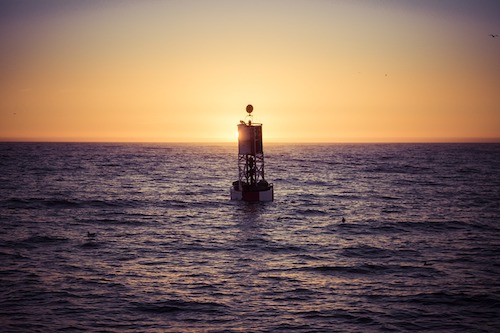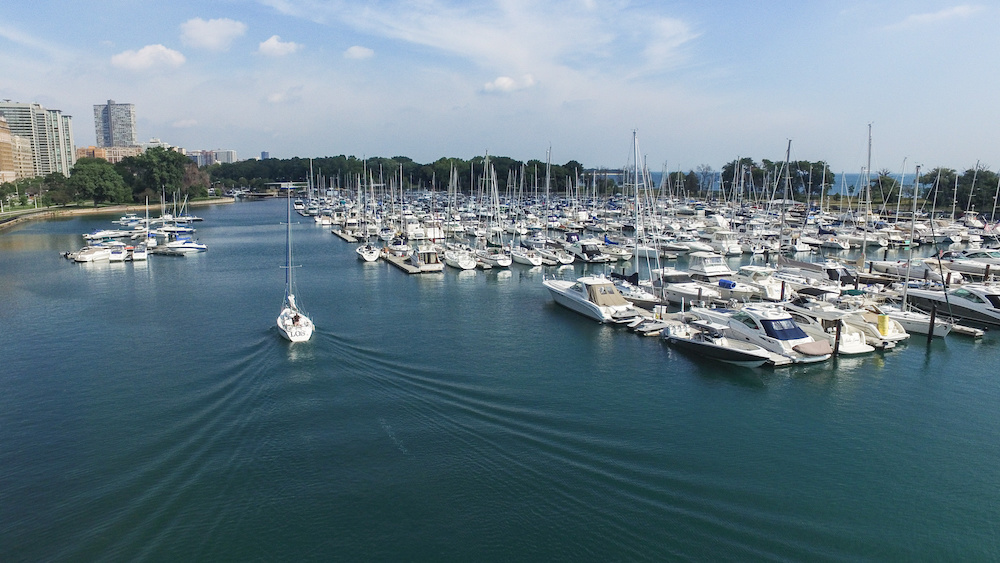Since there are no yellow or white lines or stop signs on bodies of water, it can be difficult to understand who has the right of way in boating. Right of way rules (often referenced as the "rules of the road" or navigation rules) are specifically defined maneuvering regulations designed primarily to avoid a collision between vessels. There are many rules and they differ by type of vessel, the operations that vessel is involved in at the time, and where the vessel is located (on inland or offshore waters).
Learning and memorizing all of them is a tall order for boaters of all experience levels, but it’s imperative to know the basics and then have the proper reference tools aboard to consult for all the more nuanced regulations.
5 Boating Right of Way Basics
- Vessels under sail (without auxiliary power engaged) have right of way over powerboats in most cases. There are exceptions as described above and in an overtaking situation.
- When crossing, the boat on the right (approaching from starboard) has the right of way. At night, you’ll see a red light moving across your horizon to the left. If there is a constant speed and bearing, you’re on a collision course and need to take evasive action.
- When meeting head-on, each vessel must alter course to starboard if possible to give a wide berth to the oncoming vessel. At night you’ll initially see both red and green lights.
- Any vessel overtaking another must keep clear of the stand-on vessel. You must keep clear if you’re coming up from behind and passing any vessel even if you are under sail and are coming up on a powered vessel. At night you’ll see a white light.
- When approaching another vessel whose intentions aren’t clear, take evasive actions early and make them clear in order to communicate effectively with the other vessel. In other words, slow down and make any course changes large enough to be understood and consistent (don’t drive haphazardly).
Boating Etiquette: Reading Between "The Rules"
Sailing Right of Way
When two boats that are both under sail meet, the following rules apply:
- The boat on a starboard tack has the right of way—the wind coming over the starboard rail.
- When two vessels are on the same tack (the wind is coming from the same side), the leeward boat (downwind) has the right of way over the windward boat (that presumably has clean air for better sailing conditions).
- When on the same tack in a passing situation, the vessel being overtaken has the right of way—always.
It’s your responsibility as the captain to know the basics and to act in a responsible manner to avoid a collision even if you’re the stand-on vessel. Slow down, evaluate the situation, make your intentions clear and in the end, presume the other guy has no clue and avoid an accident.
For a complete listing of navigation rules, refer to “Navigation Rules of the Road” published by the U.S. Coast Guard (COMDTINST 16672.2 Series).
Vessel Types, Categories & Definitions
Navigation rules focus on how and where vessels move. These are also supplemented by light and sound signaling rules that are covered under different sections of what is called COLREGS, the International Regulations for Prevention of Collision at Sea, and they govern the responsibilities of vessel operators in inland and international waters. A copy of the Rules of the Road can be purchased at chandleries and a must be carried aboard vessels of 40 feet or longer.
The type of vessel will often dictate a captain’s course of action. Powerboats are propelled by machinery. Sailboats under sail are in one category but a sailboat with its auxiliary motor turned on and in gear is considered to be a powerboat even if its sails are up. The following vessels also have priority in certain cases:
- Vessels constrained by draft (boats with a deep draft moving through shallow channels).
- Vessels restricted in their ability to maneuver (boats that may be too large to be agile in a small body of water or those actively operating as tugs, buoy tenders, or those engaged in commercial fishing with gear deployed, etc.).
- Vessels not under command (no one is in charge for whatever reason).
Vessel circumstances are defined differently. A stand-on vessel has the right of way and must maintain course and speed. It must also acknowledge understanding the intentions of the give-way vessel if signaled. The give-way or “burdened” vessel has the responsibility to maneuver safely around the stand-on vessel.
Marine Navigation: How to Navigate a Boat
Frequently Asked Questions
Q. If I’m towing a wakeboarder and another boat that’s not towing is in my way, who has the right of way?
If you’re towing on a lake or river, inland rules of the road still apply. However, your priority should be the safety of both vessels and the person you’re towing so if you must take evasive action, signal your boarder and stop, slow down or turn to avoid an accident.
Q. My boat is only 20 feet long. Do I still need to have a copy of the U.S. Coast Guard Navigation Rules onboard?
You don’t need a copy onboard, but you do need to know the basics. If you’re hazy on any part, a copy may be a good investment.
Read Next: 5 Best Marine Navigation Apps for Boaters
You Might Also Like:

